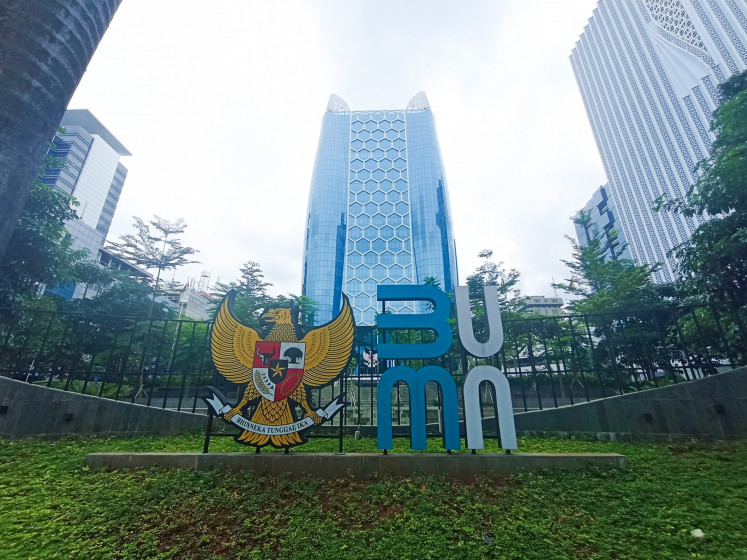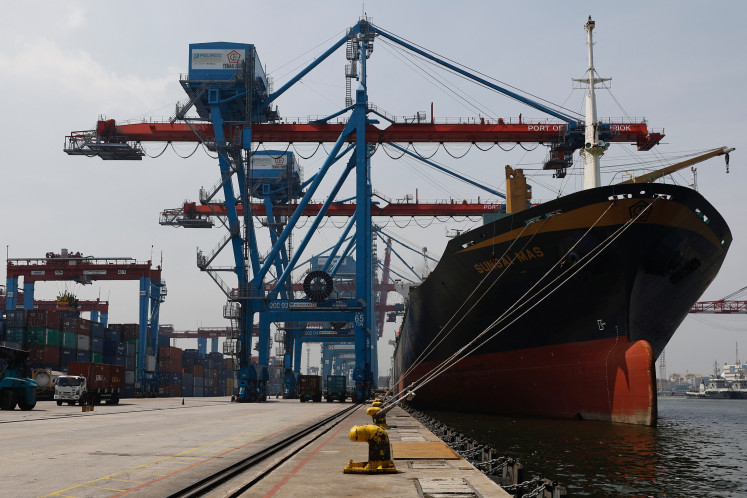OJK sets new premium rates for general insurance
The Financial Services Authority (OJK) introduced a new insurance rule on Friday to regulate premium rates for the protection of property and motor vehicles against natural disasters, to curb unfair competition in the countryâs general insurance market
Change text size
Gift Premium Articles
to Anyone

T
he Financial Services Authority (OJK) introduced a new insurance rule on Friday to regulate premium rates for the protection of property and motor vehicles against natural disasters, to curb unfair competition in the country's general insurance market.
OJK commissioner overseeing non-banking financial industry, Firdaus Djaelani, said that the new rule set the maximum and minimum premium rates chargeable by the country's general insurance companies for protection against losses caused by flooding, earthquake, volcanic eruption and tsunami.
'We set a maximum rate to protect customers from over-priced premium rates, while the minimum rate is needed so insurers will have enough money to pay insurance claims,' Firdaus told reporters at his office.
The minimum rate is also necessary to ensure healthy competition in the industry, he said.
The new rate plan outlines three zones for motor vehicles: Sumatra; Jakarta and West Java; and the rest of the archipelago.
Meanwhile, for the property sector, the new rate scheme classifies properties into 120 types of buildings including industrial, commercial and residential, with basic protection from fire, lightning, explosion and aircraft (FLEXA). For the flood insurance, the rate classifies property into 120 areas according to their potential risk of flood.
'The premium price depends on the type of the property or motor vehicle as well as the zones; whether it is a flood-prone zone or not, for instance. So it is hard to name the maximum and minimum prices because it is very technical,' Association of General Insurance Companies (AAUI) executive director Julian Noor said.
He said that the association welcomed the regulation, as it would encourage insurers to set their premiums based on the prevailing risks. With such a regulation, no insurers would charge too far below the market premium rates, which could cause unhealthy competition.
Following the flood disaster that submerged the capital city's main thoroughfares in 2013, the association set a rate scheme that no longer classified properties into industrial, commercial or residential buildings. Instead, it divided properties in Jakarta into three categories depending on the potential risk: low, moderate or high. Each category determines the premium price.
For example, the low-risk zone covers areas that have never been flooded or have been flooded to a depth of 30 centimeters, such as Rawamangun in Pulogadung, East Jakarta. The rate is set at 0.04 percent of the property's price. Meanwhile, the rate for the high-risk zone, which includes Pluit in North Jakarta, is fixed at 0.52 percent.
The Business Competition Supervisory Commission (KPPU) later said that the scheme breached Law No. 5/1999 on Monopolies, as the rates were formulated and agreed upon by all members of the AAUI, and endorsed by the association.
The KPPU argued that the OJK, as financial regulator, should be the legitimate institution to issue the scheme, not the AAUI.
'The minimum rate that is set by the OJK is much lower than the rate that was set by the association last year,' Julian said.
The association estimated its members would have lower claims from the current floods than those paid in early 2013, when floodwaters inundated the capital's main roads, including Jl. Sudirman, Jl. MH Thamrin and Jl. HR Rasuna Said.
Based on the association's data, insurance companies paid a total of Rp 638 billion (US$52.37 million) in flood-related claims last year. The figure is comprised of around Rp 600 billion in property claims, with the remainder in motor vehicle claims.









